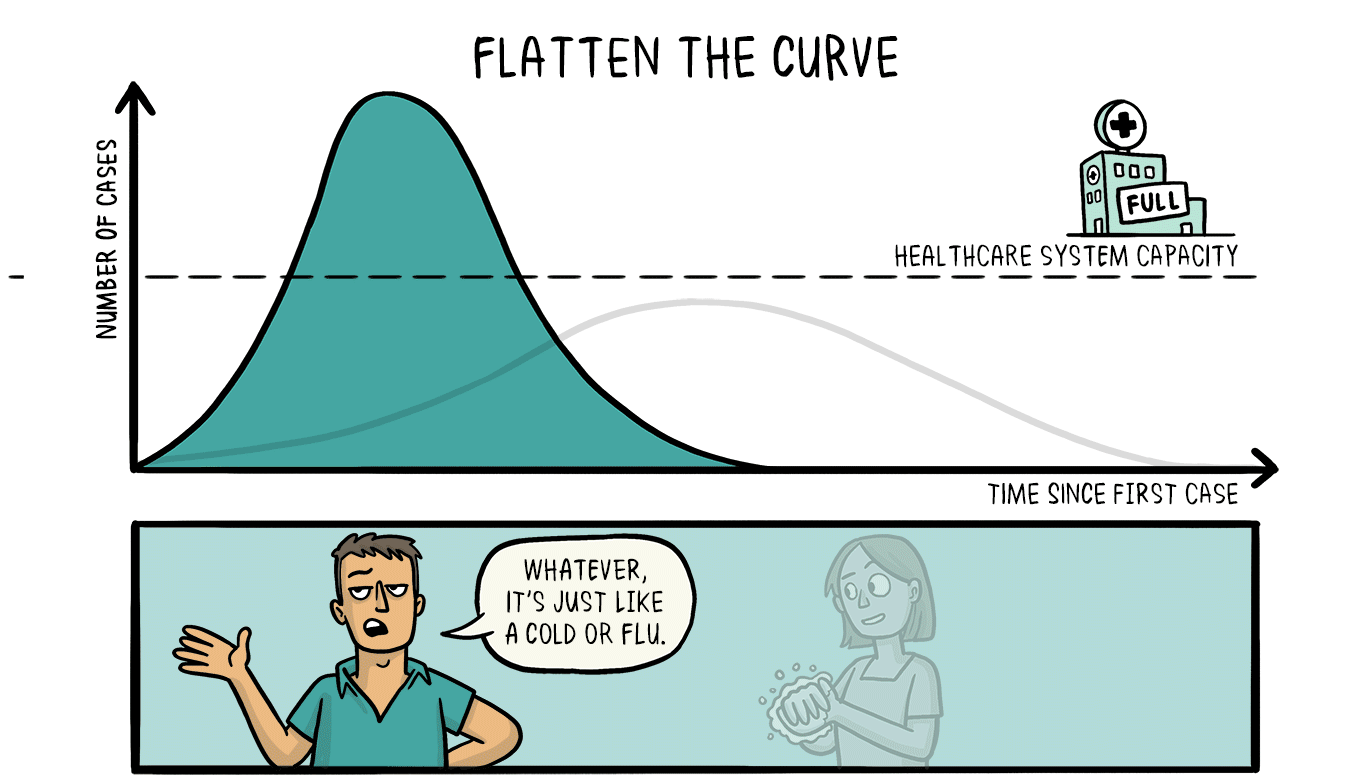
Experts are telling us that staying home is the one way to “flatten the curve” of the number of COVID-19 cases and prevent an overload of hospitilizations. But when will we know if this massive change to our daily lives is having enough of an impact?
KQED’s Brian Watt spoke with Dr. John Swartzberg, an infectious disease expert at the UC Berkeley School of Public Health, to find out. The following excerpts from the interview have been edited for length and clarity.
How Well Are We Doing With Social Distancing and Is It Working?
I think we’re doing pretty well. In terms of–is it going to make a difference?–we’re going to have to wait and see. Right now really reflects what’s happened about two weeks ago. We’re going to have to wait a couple more weeks to really see how well this social distancing is working, or at least to get a preliminary idea.
How Do Scientists Predict How Many People Might Become Infected, or Die?
Modeling is done by looking at the results of testing both positive and negative tests. Also, depending upon the modeling, things like hospitalizations, people in the ICU, people dying. So it compiles a lot of this data,
But they’re only as good as the data that goes into them. We’ve been very behind the eight ball in terms of the number of people we’ve tested. It’ll go down as one of the tragedies in the United States that we so failed early in this pandemic to not test our population. If we don’t test a large number of people, it makes the data that we use more suspect.
Do We Have Any Idea How Long a Surge in Patients Could Last, Once It Starts?
Unfortunately, I think the chances of a surge not beginning are very, very small. The question is how bad is it going to be? And, I’m cautiously optimistic that the sheltering in place is going to help change the slope of that curve, so, we’re not going to see a terrible surge. If we look at China, they started to plateau, and then started to decline, and that took place over around three weeks or so. So if we’re going to experience what China has seen, we would say that the surge starts to plateau, it could be, around three weeks or so.
If We Don’t See a Surge in Numbers, Would It Mean We Did Something Right?
Absolutely. I think that the major intervention that we have done in terms of prevention has been sheltering in place. There’s every reason to think it would work, both theoretically and we saw it — although it was draconian what the Chinese did — but we saw it worked in China as well. So I think that we can, and we should, anticipate that the sheltering-in-place will work, but it’s going to take a while for it to show up.
Why Do You Think Things Have Played Out So Differently in California and New York?
California instituted shelter in place five to seven days before New York did. And I know people are going to think, ‘Well, that’s not much.’ But in terms of how fast this virus is spreading through our population, it’s a lot of time.
New York has roughly about 28,000 people per square mile. San Francisco has about 17,000 people per square mile. The more dense the population is, the more opportunity virus has to spread. And once the virus spreads to a nonimmune person, on average, that person is going to spread it to about three more people. So you can see how quickly you get an exponential curve.